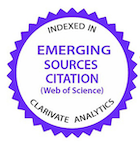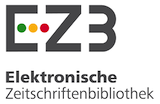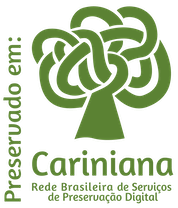Resíduo de biscoito tipo wafer na alimentação de codornas de corte
DOI:
https://doi.org/10.1590/1809-6891v21e-55943Resumo
Foram realizados dois experimentos com o objetivo de avaliar a composição nutricional e a utilização de diferentes níveis de inclusão de resíduo de biscoito tipo wafer (RB), na alimentação de codornas europeias, sobre o desempenho produtivo, rendimento de carcaça e viabilidade econômica. No ensaio de metabolizabilidade, o RB apresentou 87,45% de MS, EB de 4.128,53 kcal/kg, EMA de 3.833,14 kcal/kg, EMAn de 3.818,92 kcal/kg, com 9,37% de PB e 17% de EE. Os valores do coeficiente de metabolizabilidade (CM) para MS, EB, EE e PB foram: 93,20; 92,85; 93,01 e 47,16%, respectivamente. No ensaio de desempenho, houve redução linear (P<0,05) do consumo de ração das aves nos períodos de 22 a 42 dias e de um a 42 dias de idade. O ganho de peso e a conversão alimentar das aves não foram influenciados (P>0,05) pela inclusão do RB. Não houve efeito (P>0,05) dos níveis de inclusão do RB sobre o rendimento de carcaça. A ração com 20% demonstra ser mais rentável. Recomenda-se a inclusão do RB até o nível de 20% nas dietas para codornas, sem comprometer o desempenho produtivo, o rendimento de carcaça e a viabilidade econômica.
Palavras-chave: coturnicultura; metabolismo; nutrição; subproduto da agroindústria.
Downloads
Referências
Ashour EA, Reda FM, Alagawany M. Effect of graded replacement of corn by broken Rice in growing
japanese quail diets on growth performance, carcass traits and economics. Asian Journal of Animal
Science. 2015; 9(6): 404-411.
Cullere M, Tasoniero G, Giaccone V, Miotti-Scapin R, Claeys E, Smet S. Black soldier fly as dietary protein
source for broiler quails: apparent digestibility, excreta microbial load, feed choice, performance, carcass
and meat traits. Animal Journal. 2016; 10(12): 1923-1930.
Rufino JPF, Cruz FGG, Miller WPM, Melo RD, Feijó JC, Chagas EO. Análise econômica da inclusão de
farinha do resíduo de tucumã (Astrocaryum vulgare, Mart) na alimentação de poedeiras comerciais.
Revista Brasileira de Saúde e Produção Animal. 2015; 16(1):1-9.
Lana GRQ. Avicultura. Rural. 2000; 268 p. Portuguese.
Silva EA, Albino LFT, Rostagno HS, Ribeiro Junior V, Vieira RA, Campos AMA. et al. Chemical composition
and metabolizable energy values of feedstuffs for broiler chickens. Revista Brasileira de Zootecnia. 2012;
(3): 648-654.
Barros Júnior RF, Lana GRQ, Lana SRV, Leão APA, Ayres IC, Santos DS, Lima LAA, Silva WA. Resíduo
da polpa do maracujá como alimento alternativo para codornas europeias fêmeas. 2018; 16: 9-12.
Portuguese.
Volpato RM, Oliveira V, Gewehr CE, Neto DP. Coprodutos da agroindústria na alimentação de leitões.
Ciência Rural. 2015; 45(1): 86-91. Portuguese.
Moretto E, Fett R. Processamento e análise de biscoito. São Paulo: Varela. 1999. 98p. Portuguese.
Lima MR, Ludke M.M. Utilização de ingredientes energéticos pela tilápia do Nilo. Revista Eletrônica
Nutritime. 2011; 8(2): 1418-1430. Portuguese.
Omoikhoje SO, Oduduru O, Eguaoje SA. Effect of substituting maize with biscuit waste meal on the
growth performance, carcass traits, relative organ weight and cost benefit of broiler chickens. Animal
Research International. 2017; 14(2): 2751-2758.
Corassa A, Prezotto RT, Komiyama CM, Moreira PSA, Araújo CV. Farelo de biscoito na alimentação de
porcas em lactação. Pesquisa Agropecuária Tropical. 2014; 44(1): 42-49. Portuguese.
Santos GRA, Queiroz LO, Silva MA, Andrade ACS, Souza EJO. Substituição do milho por resíduo de
panificação na dieta de ovinos: consumo e digestibilidade aparente. B. Indústr. Anim. 2014; 71(2): 154-
Portuguese.
Nunes RV, Rostagno HS, Albino LFT, Gomes PC, Toledo RS. Composição bromatológica, energia
metabolizável e equações de predição da energia do grão e de subprodutos do trigo para pintos de
corte. Rev. Bras. Zootec. 2001; 30(3): 785-793. Portuguese.
Rostagno HS, Albino LFT, Hannas MI, Donzele JL, Sakomura NK, Perazzo FG. et al. Tabelas brasileiras
para aves e suínos: composição de alimentos e exigências nutricionais. 4. ed. Viçosa (MG): Universidade
Federal de Viçosa; 2017. 488p. Portuguese.
Paes JPS, Freitas HJ, Cordeiro MB. Utilização de farelo de macarrão na alimentação de frangos de corte
de linhagem caipira. Enciclopédia Biosfera. 2015; 11(21): 1897-1902.
Shittu MD, Ojebiyi OO, Ademola SG, Ojediran TK. Replacement value of biscuit dough for maize on
performance and nutrient utilization of broiler chickens. International Journal of Science, Environment
and Technology. 2016; 5(3): 1057–1065.
Silva DJ, Queiroz AC. Análise de alimentos: métodos químicos e biológicos. 3. ed. Viçosa (MG):
Universidade Federal de Viçosa; 2002. Portuguese.
Rostagno HS, Albino LFT, Donzele JL, Gomes PC, Oliveira RF, Lopes DC. et al. Tabelas brasileiras para
aves e suínos: composição de alimentos e exigências nutricionais. 3. ed. Viçosa (MG): Universidade
Federal de Viçosa; 2011. Portuguese.
Sibbald JR, Slinger SJ. A biological assay for metabolizable energy in poultry feed ingredientes together
with findings which demonstrate some of the problems associated with the evaliation of fats. Poultry
Science, Champaign. 1963; 42(2): 313-325.
Matterson LD, Potter LM, Stutz MW, Singsen EP. The metabolizable of feeds ingredient for chickens.
Storrs: University of Connecticut – Agricultural Experiment Station. 1965; 11(7).
R Development Core Team: ‘A language and environment for statistical computing’. Vienna: R
Foundation for Statistical Computing, 2016.
Buffington DE, Collazo-Arocho A, Canton GH, Pitt D, Thatcher W, Collier R. Black globe-humidity índex
(BGHI) as comfort equation for dairy cows. American Society of Agricultural Engineers. 1981; 24(3): 711-
Tardocchi CFT, Soares RTRN, Bonaparte TP, Cabral NO. Digestibilidade de resíduos agroindustriais
para suínos na fase inicial. Revista Eletrônica Nutritime. 2014; 11(6): 3770-3780. Portuguese.
Oliveira HF, Santos JS, Cunha FSA. Utilização de alimentos alternativos na alimentação de codornas.
Revista Eletrônica Nutritime. 2014; 11(5): 3683-3690. Portuguese.
Troni AR, Gomes PC, Mello HHC, Albino LFT, Rocha, TC. Composição química e energética de alimentos
para frangos de corte. Rev. Ciên. Agron. 2016; 47(4): 755-760. Portuguese.
Parpinelli, W, Cella PS, Savaris VDL, Broch J, Nunes RV. Dry brewery residue in broiler chickens feed.
Semina: Ciências Agrárias. 2018; 39(4): 1707-1716.
Santos FR, Stringhini JH, Minafra CS, Almeida CS, Oliveira PR, Duarte EF, Silva RB, Café MB. Formulação
de ração para frangos de corte de crescimento lento utilizando valores de energia metabolizável dos
ingredientes determinada com linhagens de crescimento lento e rápido. Arq. Bras. Med. Vet. Zootec.
; 66(6): 1839-1846. Portuguese.
Bergamin GT, Veiverberg CA, Siqueira LV, Eggers DP, Neto JR. Digestibilidade aparente de farelos
vegetais tratados para remoção de antinutrientes em dietas para jundiá. Pesq. Agropec. Bras. 2013;
(8): 928-934. Portuguese.
Cornélio FHG, Cargnin-Ferreira E, Boraba MR, Mouriño JLP, Fernandes VAG, Fracalossi DM.
Crescimento, digestibilidade e resistência à infecção por patógeno em tilápia-do-nilo alimentada com
probióticos. Pesquisa Agropecuária Brasileira. 2013; 48(8): 863-870. Portuguese.
Adeyemo GO, Oni OR, Longe OG. Effect of dietary biscuit waste on performance and carcass
characteristics of broilers. Food Science and Quality Management. 2013; 12: 1-9.
Shahryar HA, Nobakht A, Ahmadzadeh A, Lofti A. Possibilities of using biscuit or wafer waste in broiler
chicken diets. Kafkas Univ Vet Fak Derg. 2012; 18(5): 759-762.
Ayanrinde OJ, Owosibo OJ, Adeyemo AA. Performance characteristics of broilers fed Bread waste
based diets. International Journal of Modern Plant & Animal Science. 2014; 2(1): 1-11.
Downloads
Publicado
Como Citar
Edição
Seção
Licença
Copyright (c) 2020 Ciência Animal Brasileira

Este trabalho está licenciado sob uma licença Creative Commons Attribution 4.0 International License.
Autores que publicam nesta revista concordam com os seguintes termos:
- Autores mantém os direitos autorais e concedem à revista o direito de primeira publicação, com o trabalho simultaneamente licenciado sob a Licença Creative Commons Attribution que permite o compartilhamento do trabalho com reconhecimento da autoria e publicação inicial nesta revista.
- Autores têm autorização para assumir contratos adicionais separadamente, para distribuição não-exclusiva da versão do trabalho publicada nesta revista (ex.: publicar em repositório institucional ou como capítulo de livro), com reconhecimento de autoria e publicação inicial nesta revista.
- Autores têm permissão e são estimulados a publicar e distribuir seu trabalho online (ex.: em repositórios institucionais ou na sua página pessoal) a qualquer ponto antes ou durante o processo editorial, já que isso pode gerar alterações produtivas, bem como aumentar o impacto e a citação do trabalho publicado (Veja O Efeito do Acesso Livre).






























